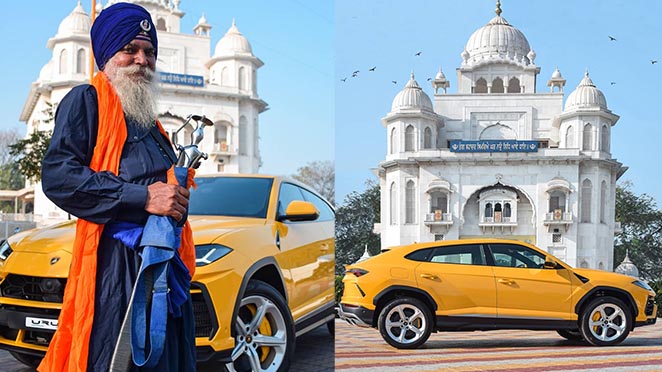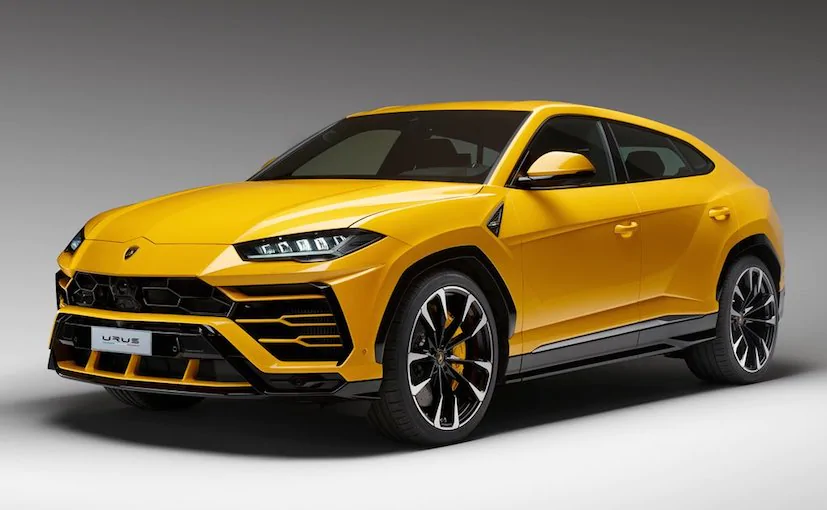
In a globalized and interconnected world, it has become crucial for luxury brands to develop their business outside their home market. This comes with its fair share of challenges to adapt and fit the brand image to, sometimes, quite different culture. In this article, we are looking at Lamborghini's success to implement in the Indian market and what adjustments in their marketing were necessary to fit to the Indian culture.

One of the key cultural differences between India and western culture is the historic caste system in India. Even though the advantages given to the higher caste were greatly diminished through the years and the action of the government, the caste identities are still strong.
Research on consumer behavior (Jain, et al., 2017) shows that Indians believe in conspicuous consumption and place their emphasis on acceptance by communities and group conformity. For marketers this means luxury consumption can be symbolic of social status and social class in Indian societies (Eng & Bogaert, 2010).
We will see how Lamborghini’s marketing and strategy adapted to Indian customs at the collective level, and market itself as a way for its customers to represent their social status.
Why India?
With almost 1.4 billion habitants and the third-largest number of billionaires in the world (Hurun Global Rich List 2021), India is most certainly an interesting market worth considering for a luxury marketer. The country is facing a consequent growth in its billionaire population, even though its luxury car market only accounts for less than 1% of the overall auto market.
“This does not reflect the true potential in the market” said Head of Lamborghini India, Sharad Agarwal, and that’s without any doubt an opportunity Lamborghini saw and jumped on. In addition to this rise in the billionaire population, more young people are buying super-luxury cars: "Earlier mostly third or fourth generation business entrepreneurs were buying Lamborghini; now we see a trend where more and more first generation business entrepreneurs are buying a Lamborghini".
Adaptation to the driving conditions in India
A major challenge faced by Lamborghini in India is to make their customers understand how they can enjoy their Lamborghinis in the busy, chaotic Indian environment. Special events have been organized, such as the “Lamborghini Day”, which is meant for people to experience the car in a city driving environment and enjoy the informal luxury from the brand.
In addition to its fast entry to the market, Urus has been a total game changer: it has faced India’s challenges in terms of infrastructure and congestion in the cities. Indeed, people who had always dreamed of owning a Lamborghini found in it a vehicle capable of giving the emotion and experience of a super sports car, but also the versatility of a Sport Utility Vehicle.
Cultural adaptability
Lamborghini is a great example of a brand that truly understands the local culture. The Italian brand has partnered with communities that represent its values, demonstrating that it does not seek to impose foreign lifestyle or values. The brand seamlessly integrated itself into the cultural landscape by associations with powerful symbols of Indian culture.
Let’s take for example the partnership with the Sikh community (military and religious group). By sharing a picture of one of its cars next to the local community’s symbols, the brand associated themselves with strength and safety. Also, the campaign “The Meeting Place” associates Lamborghini to the culture, folklore and ritualistic art from the South Malabar region in order to connect the past and present and become one of the new symbols of the place.
Overall, both marketing actions were quite successful in their integration to the local culture and were well received. Lamborghini set a good example on how to adapt to a different culture and a novel market.
References
Available at: https://www.bbc.com/news/world-asia-india-35650616
[Accessed 2021 November 6].
Dasgupta, M., 2021. Lamborghini India: 2021 going to be another record year for our India business. [Online]
Available at: https://www.financialexpress.com/auto/industry/lamborghini-india-2021-going-to-be-another-record-year-for-our-india-business/2295263/
[Accessed 2021 November 6].
Eng, T.-Y. & Bogaert, J., 2010. Psychological and cultural insights into consumption of luxury Western brands in India. Journal of Customer Behaviour, 9(1), pp. 55-75.
Jain, S., Khan, M. N. & Mishra, S., 2017. Understanding consumer behavior regarding luxury fashion goods in India based on the theory of planned. Journal of Asia Business Studies, 11(1), pp. 4-21.
James, N., 2021. Lamborghini keen to deepen its India drive. [Online]
Available at: https://www.thehindubusinessline.com/companies/lamborghini-keen-to-deepen-its-india-drive/article33080809.ece
[Accessed 2021 November` 6].
Kiddaan.com, 2021. Lamborghini Compares The Car’s Safety To Nihang Singh In Historical Instagram Post. [Online]
Available at: https://kiddaan.com/lamborghini-compares-the-cars-safety-to-nihang-singh-in-historical-instagram-post/
[Accessed 2021 November 6].
Lidhoo, P., 2021. Lamborghini goes 'India-first'. [Online]
Available at: https://www.fortuneindia.com/venture/lamborghini-goes-india-first/105716
[Accessed 2021 November 6].
M, A., 2021. Lamborghini’s promotional campaign showcases a slice of Kerala and its culture. [Online]
Available at: https://www.thehindu.com/life-and-style/lamborghinis-promotional-campaign-showcases-a-slice-of-kerala-culture/article33609786.ece
[Accessed 2021 November 6].
Mahendra, A., 2021. Indian Lamborghini buyers spend 20% plus value of the car on customisation: Sharad Agarwal. [Online]
Available at: https://www.financialexpress.com/auto/industry/india-lamborghini-buyers-spend-20-plus-value-of-the-car-on-customisation-sharad-agarwal-urus-aventador-huracan-price/2296328/
[Accessed 2021 November 6].
Singh, R., 2021. "You need to sit behind the wheel to enjoy a Lamborghini". [Online]
Available at: https://www.forbesindia.com/article/m.a.d-marketing-advertising-decoded/quotyou-need-to-sit-behind-the-wheel-to-enjoy-a-lamborghiniquot/69331/1
[Accessed 2021 November 6].

Comments
Post a Comment